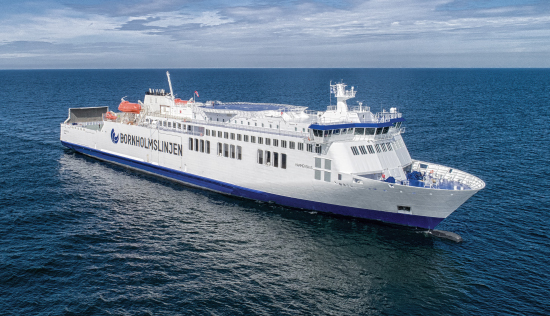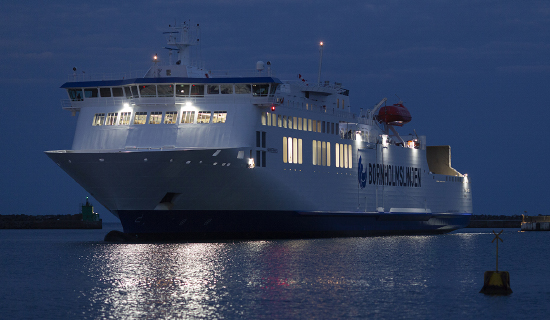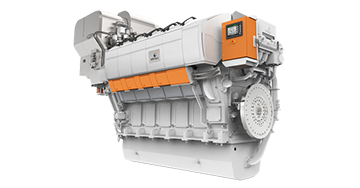
The first Wärtsilä 31 engines now in daily commercial operation on the RoPax ferry Hammershus
In 2015, the Wärtsilä 31 engine was introduced to the marine market. It marked the culmination of a major R&D project to design and create a high-efficiency engine from scratch, rather than merely further developing an existing engine type. This initiative was in response to the market’s increasing global demand for better fuel efficiency to lower operating costs, and improved environmental performance to meet exhaust emission regulations. Wärtsilä’s huge depth of experience and extensive in-house competences were utilized in bringing this project to fruition, with the result that the new engine has set a new benchmark in fuel efficiency. Guinness World Records has recognized the Wärtsilä 31 as being the world’s most efficient 4-stroke diesel engine.

The engine’s modular design makes it easier and less costly to maintain, the first major overhaul being scheduled at 32,000 running hours – far in excess of standard engine requirements. The Wärtsilä 31 also features electronically controlled common-rail technology for fuel injection, valve actuation, engine starting, and cylinder lubrication. The technology provides a high degree of flexibility in engine settings to give lower fuel consumption, very low minimum running speeds, smokeless operation at all running speeds, and outstanding control of exhaust emissions.
Wärtsilä has since introduced dual-fuel (DF) and spark-ignited pure gas (SG) versions of the Wärtsilä 31 engine to meet applications across all marine industry operations. All versions meet the industry’s demand for high efficiency, thereby creating increased economic stability for owners and operators worldwide.
This development work represents a concrete example of Wärtsilä’s Smart Marine Ecosystem strategy to lead shipping, in cooperation with the company’s customers, suppliers and partners, into a new era of ultra-high efficiencies, greater safety, and improved sustainability.
Commercial Operations
Throughout the marine industry, acceptance of the Wärtsilä 31 and acknowledgement of its benefits came rather quickly. Its reputation was endorsed with a number of orders for newbuild projects being received within a relatively short period of time.
The first of these new vessels was fitted with the Wärtsilä 31 main engines, to enter regular service was the ‘Hammershus’, a 158 metre long RoPax ferry owned by Danish operator Molslinjen. The ferry operates in the Danish waters between the city of Køge in Zealand and Rønne on the island of Bornholm. It can travel at up to 17.7 knots, and its two Wärtsilä 31 main engines run on 10 ppm ultra-low sulphur marine diesel fuel, a fuel choice that complies with the International Maritime Organization’s (IMO) restrictions on the sulphur content of marine fuel which come into force in 2020.
Each of the V8-cylinder engines has an output of 4880 kW at 750 rpm. The V-configuration makes the engine extremely compact in size by virtue of its short length. The Wärtsilä 31 operates with two-stage turbochargers that produce elevated pressures resulting in very high efficiencies, and consequently low fuel consumption.
The ‘Hammershus’ was built at the Rauma Marine Constructions (RMC) shipyard in Finland and was designed specifically for the Køge – Rønne route, with the primary focus on freight traffic. The fuel efficiency, smokeless operation, and low vibration levels enabled by the Wärtsilä 31 engines are a central feature of the ship’s design.

For Molslinjen, high efficiency and low emission operations are a priority. The ‘Hammershus’ meets these criteria, largely in part thanks to the ship’s Wärtsilä 31 engines. Our fuel costs are down compared to those of the previous vessels we had running this same route, and less fuel being burned means fewer exhaust emissions into the air.
